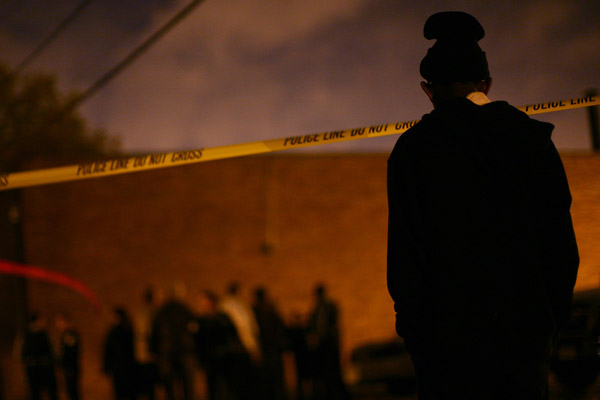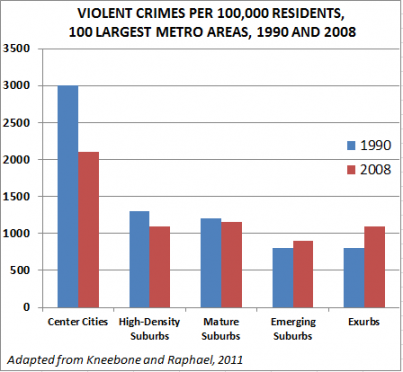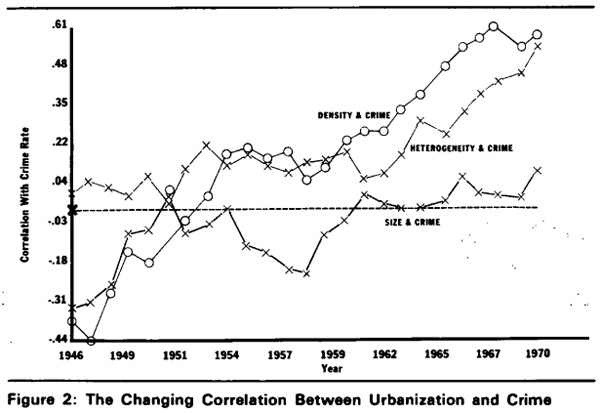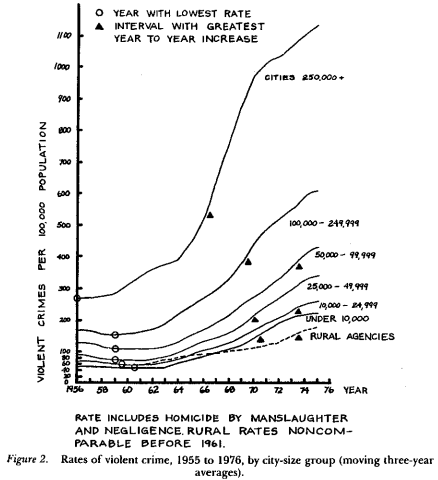
E. Jason Wambsgans/Chicago Tribune
When Chicago's murder rate jumped last year, a lot of people, including myself, looked at Chicago versus other cities—the ways in which Chicago is better, the ways in which it's worse, and so forth. That Chicago should be compared to other cities, and that cities have higher homicide rates than suburbs and rural places went without saying. And it's true. Here's a graph from Berkeley's Claude Fischer:

It's great that the violent crime rate in central cities dropped so much, but it's still substantially higher. And that's how we think of cities. But it hasn't always been that way. The correlation between cities and crime is a somewhat recent phenomenon—from its beginning to its peak in the 1990s, about three or four decades in all.
Take this chart from the legendary Chicago criminologist Wesley Skogan, published in 1977, which shows how recently density and crime have been correlated, and even more recently, size and crime among 32 large cities:

Here's another way of looking at it, from Claude Fischer in 1980:

* In 1940, the homicide rate in cities over 250k was 6.1 per 100,000; from 100k-250k, 6.5 per; from 50k-100k, 5.7 per.
* In 1970, the homicide rate in cities over 250k was 17.5 per 100,000 (and most of that increase, from 6.8 to 17.5, took place between 1960-1970; the chart above suggests you could even cram most of that increase into the mid-late 1960s). For the other two categories, it was 10.0 and 5.2. In big cities, it almost tripled; in medium-size cities, it increased only 35 percent; in small cities, it fell.
* By comparison, Chicago's homicide rate went from 7.1 in 1940 to 7.9 in 1950, 10.3 in 1960, and 24.0 in 1970, following a similar pattern.
It's… weird. And no one seems to have a good explanation, including Fischer: "Kneebone and Raphael tried to explain the recent closing of the gap by looking at the demographic and economic features of communities, but those did not account for the pattern. Something else is going on."
Skogan argues that suburbanization is a culprit: "the selective movement of people and jobs from the central city to the suburban fringe, and the impact of the movement on those left behind, may have produced the changes observed in this sample of communities." People with the means to leave the cities, taking with them cities' means. Which puts "flight from blight," the escape from decaying central cities in a different perspective: suggesting that blight followed flight as much as it caused it.


